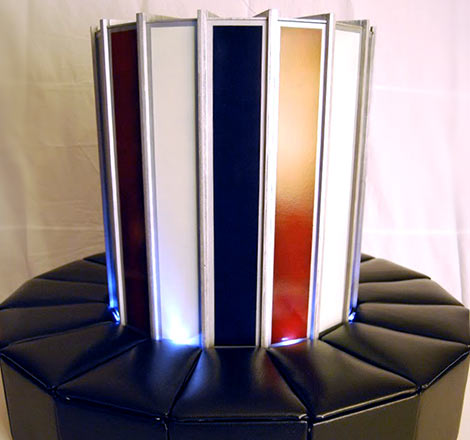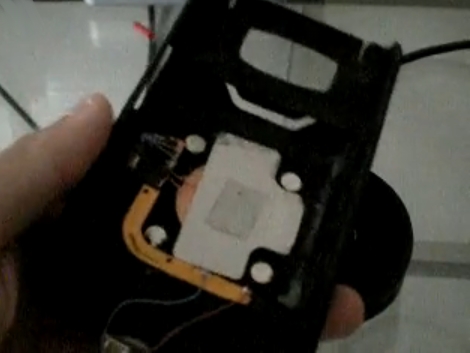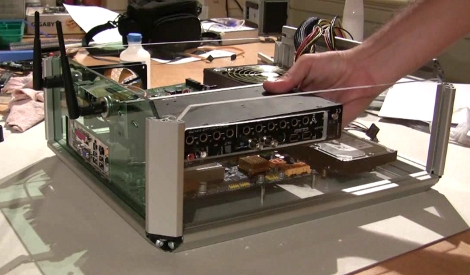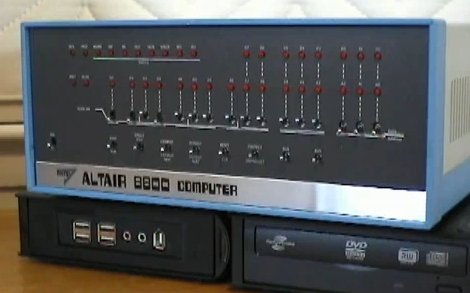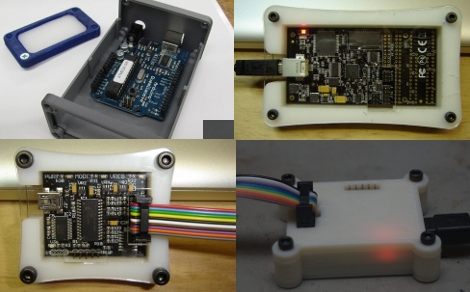Sugar rocket

We’re told that this rocket is sugar powered. It’s quite a bit bigger than the homemade sugar motors we saw last week and it makes for quite a show. [Thanks Estqwerty]
Wooden PC construction

The finished look of this wooden PC case seems very familiar to us but we’re not sure we’ve seen pictures of the build process(updated link, sorry [Jeff]) before. There’s something extremely satisfying about how well its creator works with a file. [Thanks Anders]
Working on top

We never realized that this job existed, but if you repair communication towers it’s a heck of a climb to work. The video of a two-man crew climbing a 1600 foot tower is one of the most interesting we’ve seen this year. [via Blogging Protagonist]
Lego typing machine

[Dougal’s] typing machine types his name… over and over again. An interesting little piece of mechanical engineering, we’d have to think for a while to decide the best use for this little guy. [Thanks Chris]
Typing on a different type of keyboard

Here’s another typing machine but this time it’s not a keyboard and not purely mechanical. Pictured is one of the performers in an old equipment ensemble performing with whining stepper motors, speech synthesis, an other antiquated noise-makers. [Thanks Mike]

